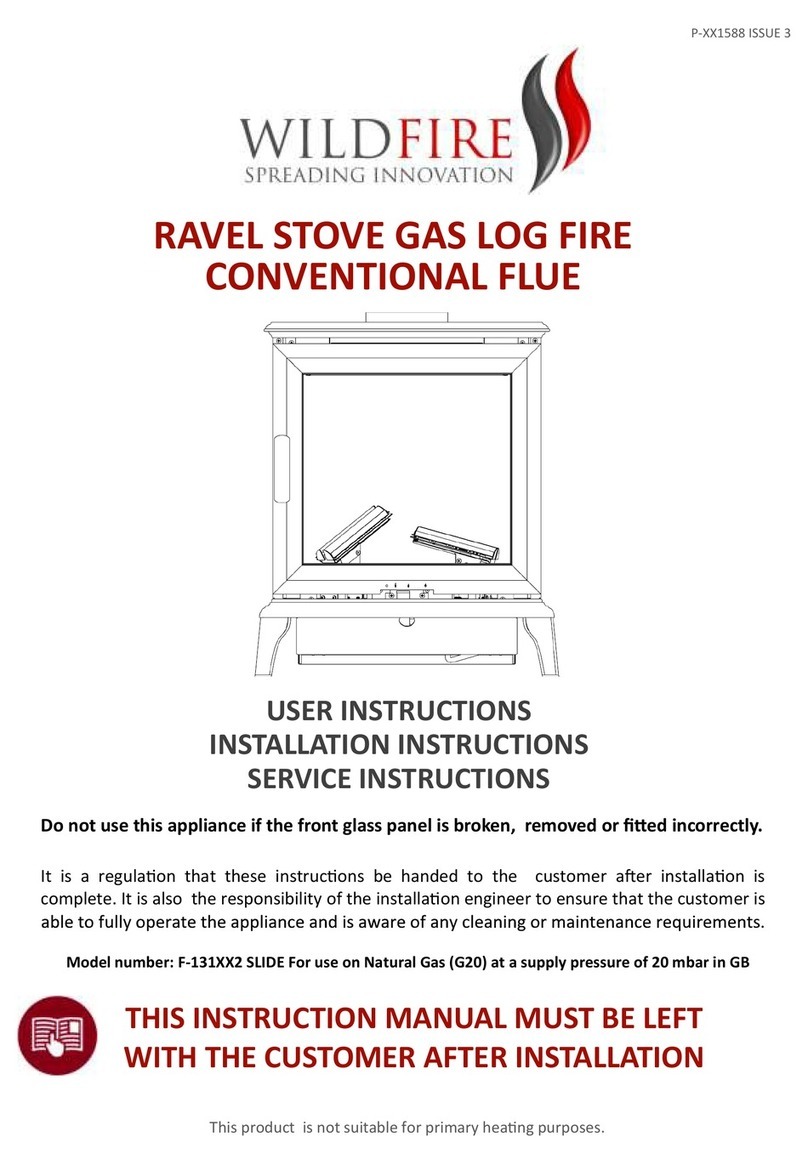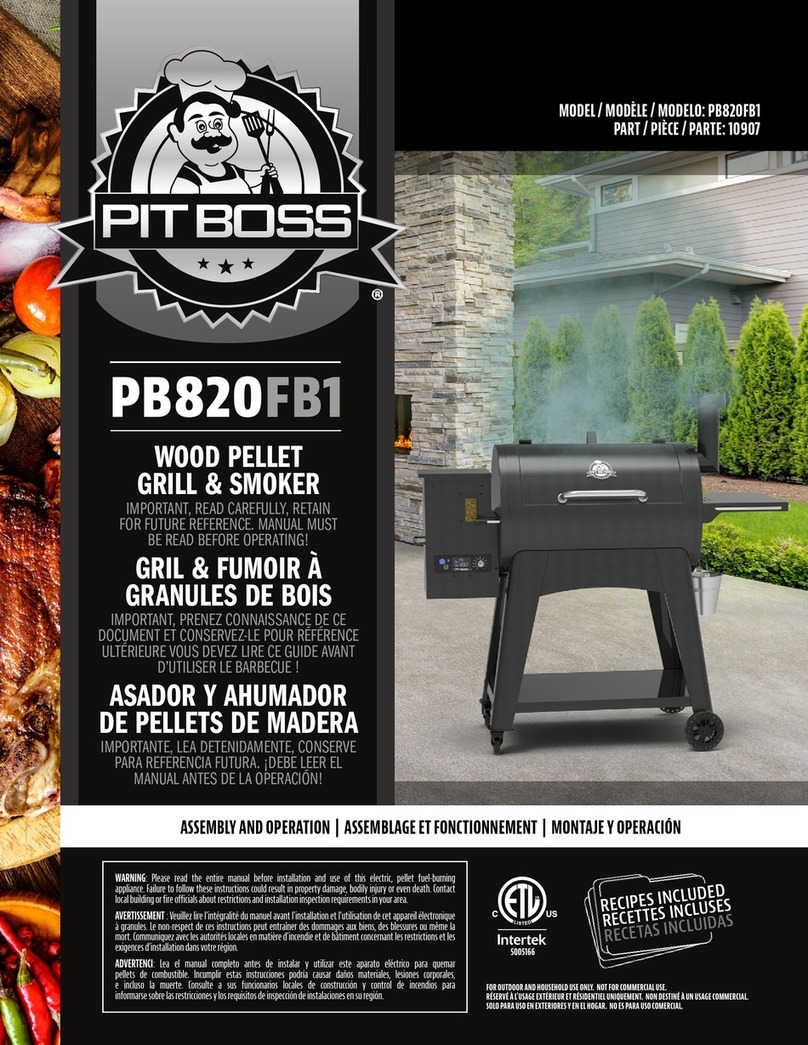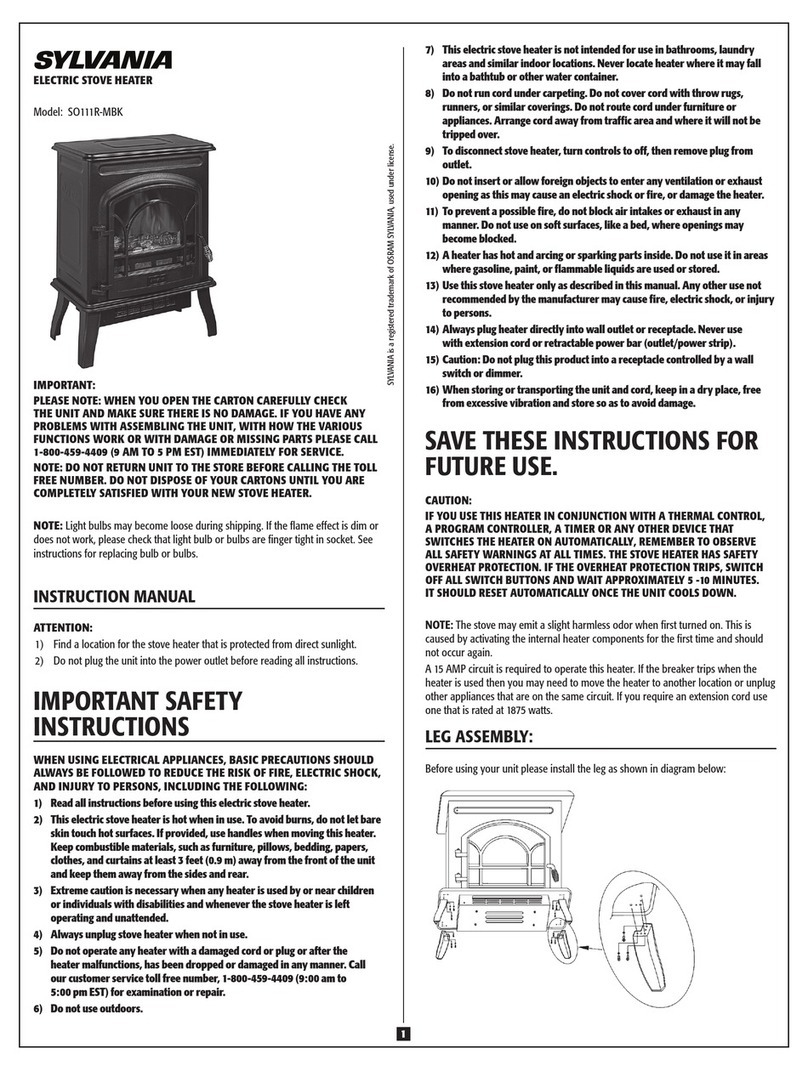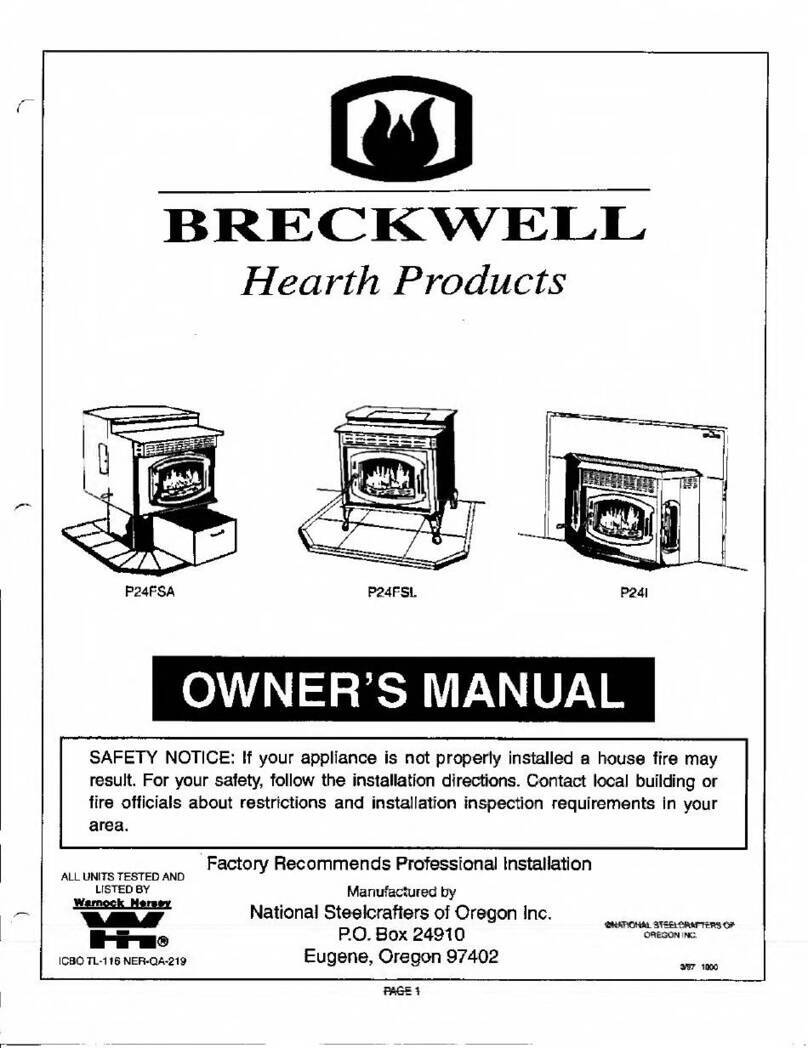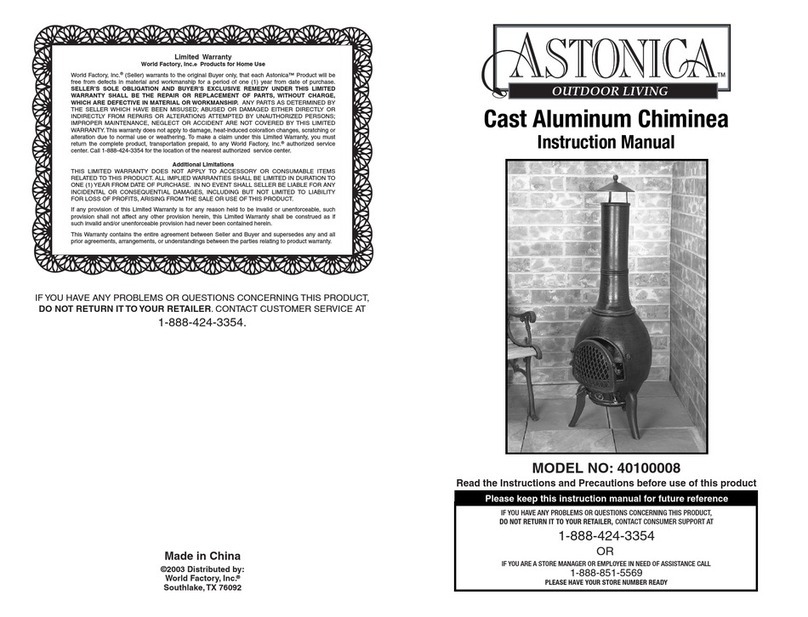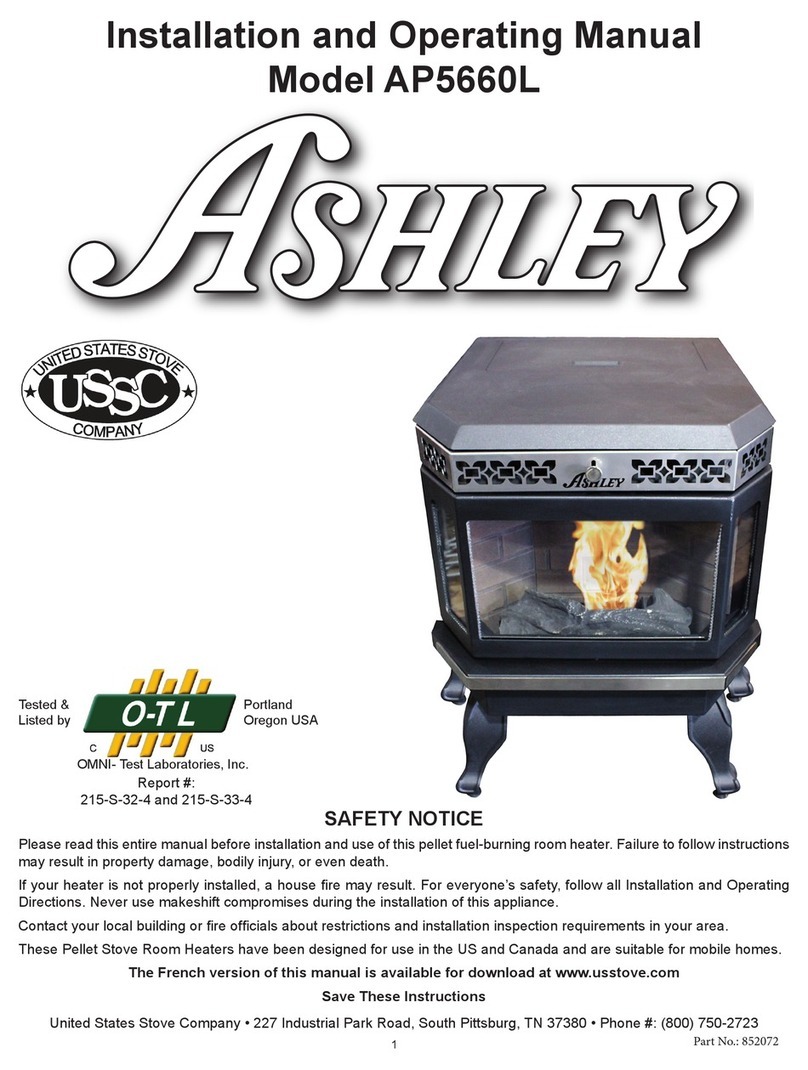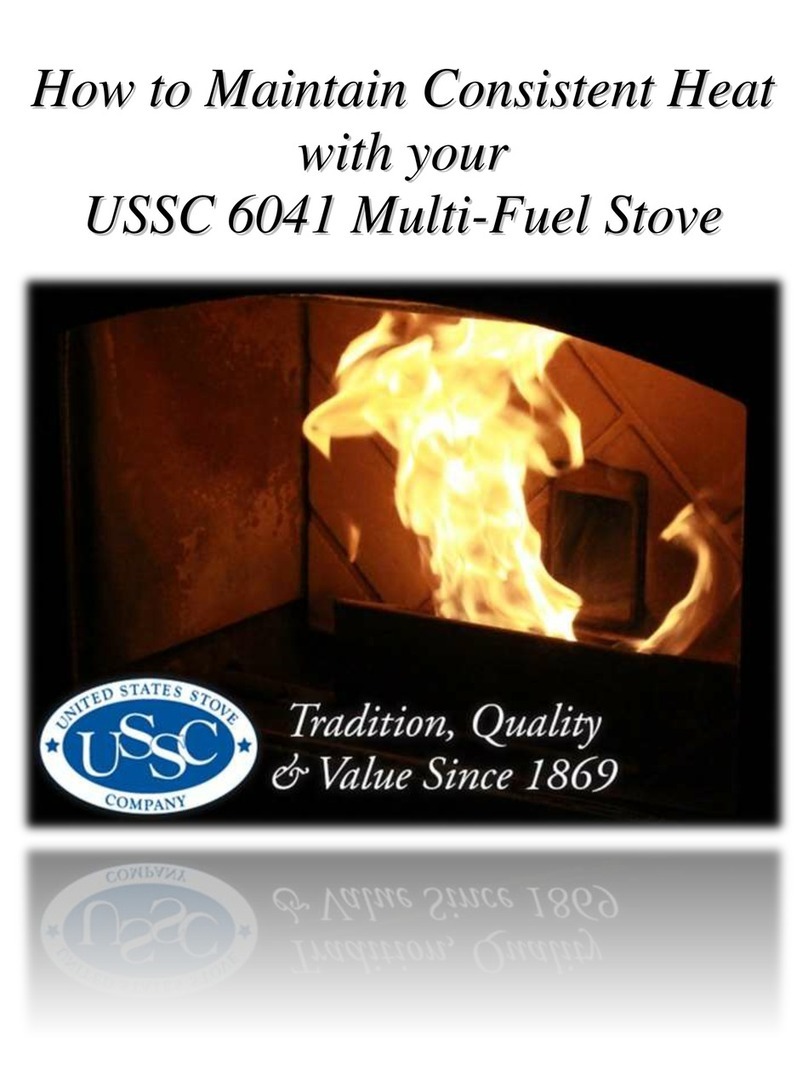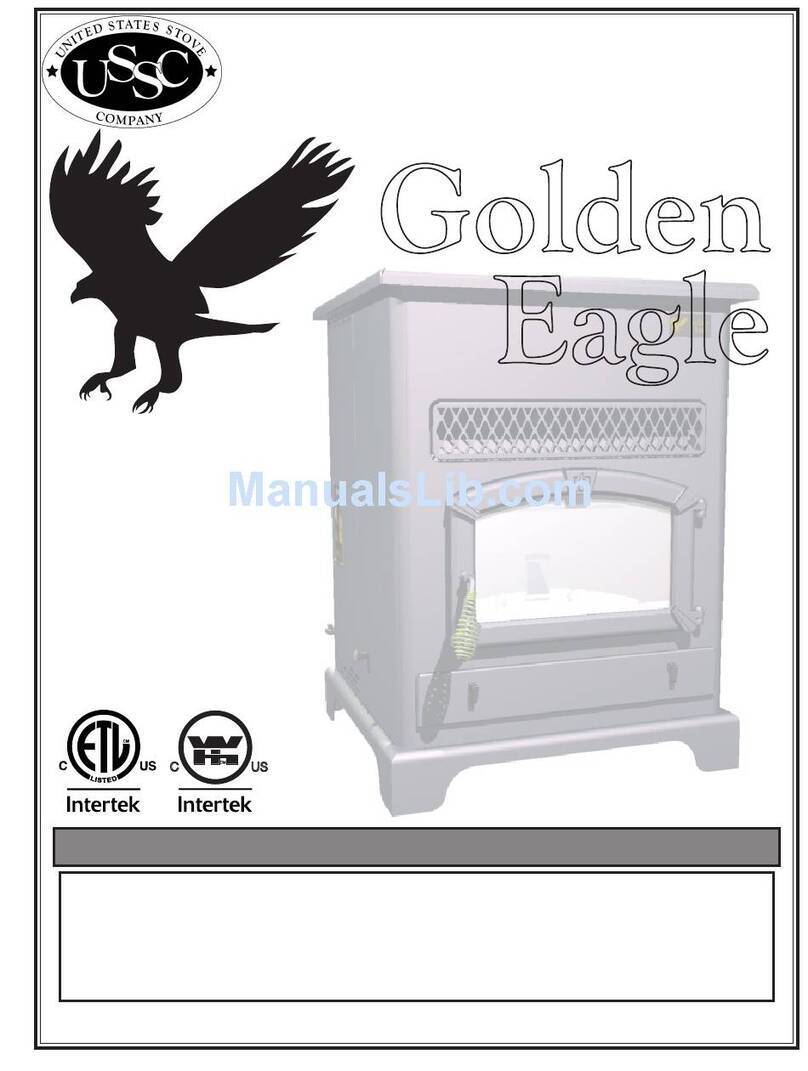
9
VENTING INTO A FIREPLACE
Many people may wish to convert an existing fire-
place to heater use. Usually, safe connection of
stovepipe to a masonry chimney requires more effort
than connection to a prefabricated chimney. The
fireplace must be tightly closed and sealed at the
damper in the flue. Good sealants are high-tempera-
ture caulking, ceramic wool, and furnace cement.
Always remember to inspect the masonry chimney
and fireplace. If necessary, clean the flue and smoke
shelf before beginning your installation. Install the
heater into the fireplace so that the system can be
dismantled for cleaning and inspection.
Before deciding to convert your fireplace, keep in
mind that some fireplaces and existing chimneys are
unsafe. They must be structurally sound, and the flue
liner must be in good condition. Do not use a chimney
if it is unlined (should have a fire clay tile liner to protect
brickwork). Have it relined professionally. Clear-
ances to combustibles are explained in the previous
section on masonry chimneys. If you have any
questions regarding the condition of the chimney,
consult a qualified engineer, competent mason, or
knowledgeable inspector.
Many prefabricated fireplaces fall into the "zero-clear-
ance fireplace" category. This is a factory-built metal
fireplace with multilayered construction. It is de-
signed to provide enough insulation and/or air cooling
so that the base, back and sides can be safely placed
in direct contact with combustible floors and walls.
Although many prefabricated fireplaces have been
tested by nationally recognized organizations for use
as fireplaces, they have not been tested to accept
heaters. In fact, their use as such may void the
manufacturer's warranty.
Steel-lined fireplaces, on the other hand, can be used
with heaters. These units use a 1/4-inch firebox liner
and an air chamber in connection with 8 inches of
masonry to meet code. They contain all the essential
parts of a fireplace, firebox, damper, throat, smoke
shelf, and smoke chamber. Many of them look
exactly like a masonry fireplace and must be checked
closely for above requirements before installing a
wood heater into them.
Another method frequently used by some people is to
vent the heater directly into the fireplace. This does
not meet code since the heater is being vented into
another appliance - the fireplace. This method should
not be attempted because combustion products will
deposit and build up in the firebox or fireplace. Be
certain not to install a hazard in your house. You will
void your warranty with this installation.
VENTING INTO A
MASONRY CHIMNEY
When considering a masonry chimney, round tiles
are preferable to square or rectangular, as round tiles
have much better airflow characteristics and are far
easier to clean. Unfortunately, most North American
chimneys use square or rectangular tile liners that are
really designed for open fireplaces, not stoves or
furnaces. Of most importance, second only to overall
chimney height, is the diameter of the flue liner itself.
In most instances, it should be sized to the appliance;
i.e., 6" flue outlet on the appliance requires a 6"
chimney. The inner diameter should never be less
than the flue-outlet diameter and should never be
greater than 50% larger than the appliance flue outlet.
For example, do not expect a wood or coal burning
stove or furnace to function properly if installed into a
chimney with a flue greater than 50% more than the
appliance outlet - - such as a 6" flue outlet requires a
6" diameter for optimum drafting, but can function well
with an 8", but becomes borderline beyond an 8"
diameter.
Masonry chimneys built of concrete blocks with or
without flue liners do not meet modern building codes.
A solid fuel appliance must not be joined to a chimney
flue which is connected to another appliance burning
other fuels.
If your chimney has a typically oversized flue liner of,
say 8 x 12 inches, or greater, or if it is unlined, it will be
necessary for you to reline the chimney, using any of
the modern approved and economical methods such
as stainless steel, castable refractory, or properly
sized fireclay linings.
If you have any questions regarding venting your
appliance, feel free to contact the factory at the
address and phone number on this Owner's Manual.
You may also contact NFPA (National Fire Protection
Association) and request NFPA Standard 211 (1984
Edition-US). Another helpful publication is NFPA
Standard 908(US). Specify 1984 Edition of either of
the above US publications.
CAUTION:
NOT ALL FIREPLACES ARE
SUITABLE FOR
INSTALLATION OF A WOOD
HEATER.

